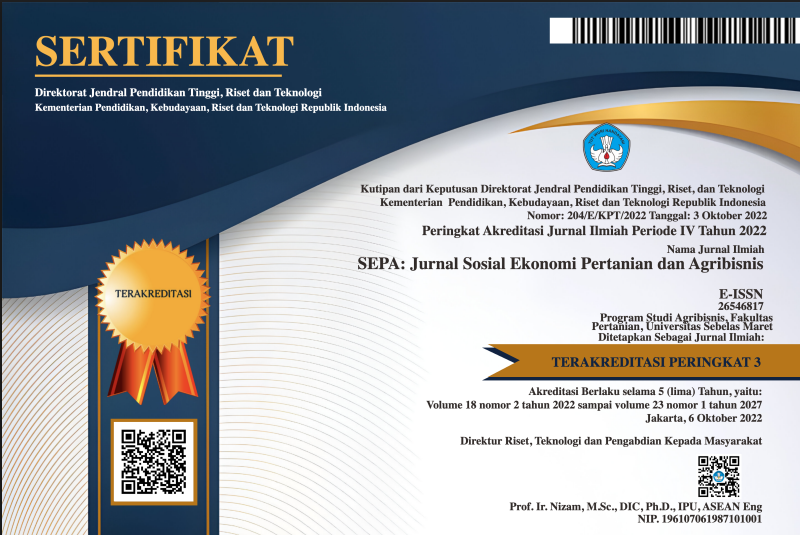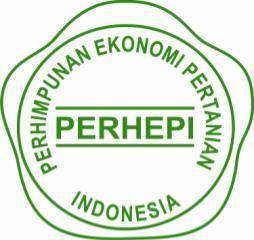KAJIAN ANALISIS USAHATANI PENGGUNAAN PUPUK ORGANIK NON KOMERSIAL TERHADAP HASIL DAN PENDAPATAN PETANI PADI
Abstract
Policy of providing chemical fertilizers at low prices through the subsidies continue to increase every year, causing inefficient use of fertilizers by farmers and in turn lower the productivity of the land. The study was conducted in the province of West Java and Central Java in 2012, aims to (1) evaluate the costs and revenues of non commercial organic fertilizer and (2) analyzing farm income and the factors that affect rice production. Total farmer respondents interviewed 60 farmers with 30 farmers who earn program Organic Fertilizer Processing Unit (UPPO) and 30 farmers who do not follow the program UPPO. To determine the effect of the use of organic fertilizers used in rice cultivation model of linear production function CobbDouglas and financial analysis or benefit cost ratio (B/C). The results showed good organic fertilizer production enterprises in the form of solid or liquid organic fertilizer is quite profitable. Farmers earn net income of Rp. 83-112 per kg of organic fertilizer in 6 weeks. The amount of chemical fertilizers used on semi-organic rice farming is reduced by approximately 50% of the amount of chemical fertilizers used in nonorganic farming. The use of labor in semi-rice organic farming is higher than nonorganic farming, especially at the stage of cultivation and weeding. R/C ratio of semiorganic rice farming is greater than non-organic rice which indicates that the semiorganic rice farming more profitable financially.
Keywords
Analysis of farming; production costs; organic fertilizer
Full Text:
PDFDOI: https://doi.org/10.20961/sepa.v10i2.14140
Refbacks
- There are currently no refbacks.
This work is licensed under a Creative Commons Attribution 4.0 International License.



.png)







.png)
3.png)





